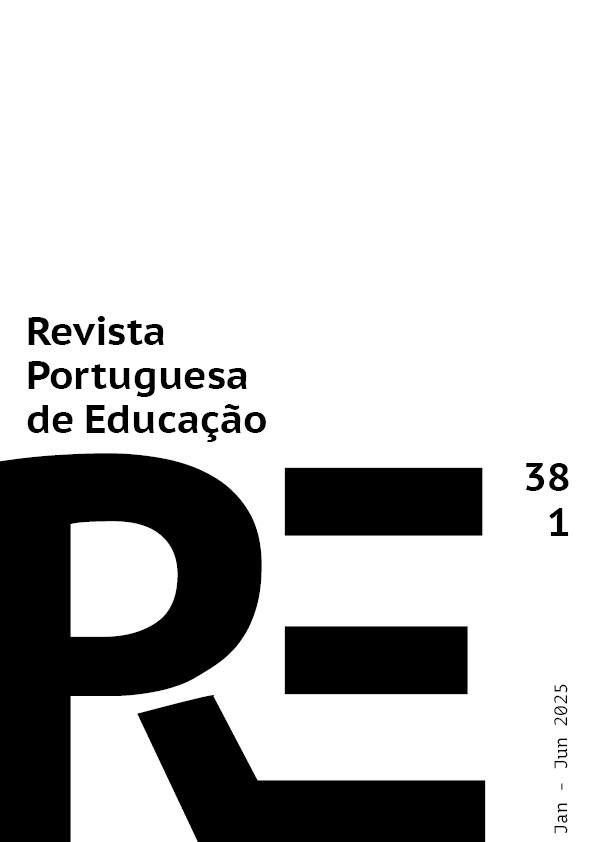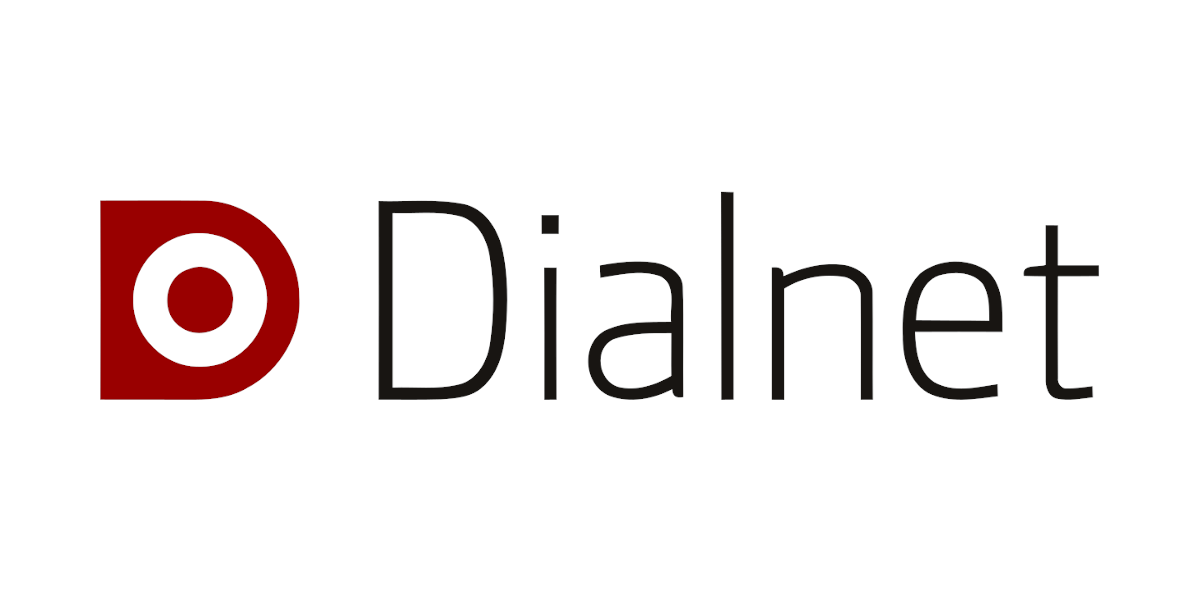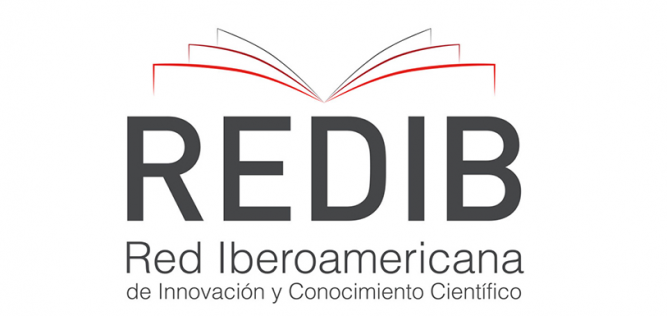Exploring the SchoolTubers universe: Analysis of channels driven by Secondary Education Schools on the YouTube platform
DOI:
https://doi.org/10.21814/rpe.36716Keywords:
Educational Video, Teaching Materials, Self-Instruction, Secondary School, Educational TechnologyAbstract
In a context of exponential growth in the use of social networks and content sharing online, this study focuses on the educational use that Secondary Education make of their YouTube channels. Using the PRISMA methodology, an exhaustive search was conducted on the YouTube platform. After applying the defined inclusion and exclusion criteria, a sample of 20 SEI channels with over 400 followers and 1250 videos was obtained. These videos were produced and openly shared between the years 2022 and 2023. Additionally, an instrument previously used for the analysis of EduTubers was adapted, and the videos were categorised according to their content. The results reveal that the most frequent use of these channels is sharing content created by students, followed by the visibility of events, promotion of the school, and interviews. Among the analysed channels, two were identified with a clear SchoolTuber profile, as they develop projects that contribute to the school's openness, are sensitive to the social reality of the context, and promote a culture of participation and collective responsibility among students.
Downloads
References
Achuthan, K., Kolil, V. K., Muthupalani, S., & Raman, R. (2024). Transactional distance theory in distance learning: Past, current, and future research trends. Contemporary Educational Technology, 16(1), ep493. https://doi.org/10.30935/cedtech/14131
Amorós-Poveda, L., & Bernárdez-Gómez, A. (2023). EduTuber and Gender in STEM. Education Sciences, 14(1), e40. https://doi.org/10.3390/educsci14010040
Anzola-Gómez, J., Rivera-Rogel, D., & Aguaded, I. (2022). Interacción social e interacción discursiva de un canal de YouTube educativo. Fonseca: Journal of Communication, (25), 115–132. https://doi.org/10.14201/fjc.29406
Anzola-Gómez, J., & Rivera-Rogel, D. (2023). Análisis comparativo de la interacción discursiva de dos ‘EduTubers’ de matemáticas. index.Comunicación, 13(2), 297–320. https://doi.org/10.33732/ixc/13/02Analis
Aran-Ramspott, S., Moro Inchaurtieta, A. & Botella García del Cid, L. (2022). ¿De qué me sirven los YouTubers e Instagramers? Preferencias De Los Adolescentes En España. Revista ICONO 14. Revista científica de Comunicación y Tecnologías Emergentes, 20(2), 1-23. https://doi.org/10.7195/ri14.v20i2.1875
Area, M. (2017). La metamorfosis digital del material didáctico tras el paréntesis Gutenberg. RELATEC - Revista Latinoamericana De Tecnología Educativa, 16(2), 13-28. https://doi.org/10.17398/1695-288X.16.2.13
Ayat, A., & Randa, O. (2019). The Impact of Social Networks on Students’ Academic Achievement in Practical Programming Labs. IJACSA - International Journal of Advanced Computer Science and Applications, 10(11), 56-61. http://dx.doi.org/10.14569/IJACSA.2019.0101108
Berk, R. A. (2009). Multimedia teaching with vídeo clips: TV, movies, YouTube, and mtvU in thecollege classroom. International Journal of Technology in Teaching and Learning, 5(1), 1–21.
Bétrancourt, M., & Benetos, K. (2018). Why and when does instructional vídeo facilitate learning? A commentary to the special issue “developments and trends in learning with instructional vídeo.” Computers in Human Behavior, 89, 471–475. https://doi.org/10.1016/j.chb.2018.08.035
Campodónico, N., & Aucapiña, I. E. (2024). Revisión sistemática sobre la influencia de las redes sociales en la autoestima de los adolescentes. PSICOLOGÍA UNEMI, 8(15), 73-87. https://doi.org/10.29076/issn.2602-8379vol8iss15.2024pp73-87p
Castañeda, L., & Gutiérrez, I. (2010). Redes sociales y otros tejidos online para conectar personas. In L. Castañeda (Coord.), Aprendizaje con redes sociales: Tejidos educativos en los nuevos entornos (pp. 17-40). MAD Eduforma.
Cervantes-González, E., Hernández, S., & Chaparro, R. (2022). El emprendimiento de EDUTUBERS hispanos y su aportación al aprendizaje. Clasificación de vídeos YouTube y análisis de comentarios durante el COVID-19. EDU REVIEW - The International Education and Learning Review, 10(4), 317-344. https://doi.org/10.37467/revedu.v10.3392
Chugh, R., Grose, R., & Macht, S. A. (2021). Social media usage by higher education academics: A scoping review of the literature. Education and Information Technologies, 26, 983–999. https://doi.org/10.1007/s10639-020-10288-z
Colás-Bravo, M. P., & Quintero-Rodríguez, I. (2023). La mediación de YouTube para el aprendizaje informal: un diseño microgenético. Revista Prisma Social, (41), 175–193. https://dialnet.unirioja.es/servlet/articulo?codigo=8923480
Colomo-Magaña, E., Gabarda, V., Cívico, A., & Cuevas, N. (2020). Percepción de estudiantes sobre el uso del vídeoblog como recurso digital en educación superior. Pixel-Bit - Revista de Medios y Educación, (59), 7–25. https://doi.org/10.12795/pixelbit.74358
Comisión Europea (2023). Plan de acción de educación digital 2021-2027: Mejorar la provisión de capacidades digitales en la educación y la formación. Dirección General de Educación, Juventud, Deporte y Cultura. Oficina de Publicaciones de la Unión Europea. https://data.europa.eu/doi/10.2766/75
Dhote, T. P. (2021). Review of Consumer Engagement and Digital Entertainment on Over the Top Platforms. In S. Das & S. Gochhait (Eds.) Digital Entertainment (p.23-44). Palgrave Macmillan. https://doi.org/10.1007/978-981-15-9724-4_2
Díaz, A. (2011). Información y sociedad del conocimiento en América Latina. Biblioteca Universitaria, 14(1), 18-25. https://doi.org/10.22201/dgb.0187750xp.2011.1.122
Digón, P., Rodríguez, A., & Castro, M. M. (2023). Menores influencers y la importancia de una alfabetización mediática crítica. EDMETIC, 12(1), art.7. https://doi.org/10.21071/edmetic.v12i1.15223
Fedele, M., Aran-Ramspott, S., & Suau, J. (2021). Preferências e Práticas dos Pré-Adolescentes no YouTube: Resultados de um Estudo Realizado na Catalunha. Comunicação e Sociedade, 39, 145–166. https://doi.org/10.17231/comsoc.39(2021).2714
Ferrante, P., & Dussel, I. (2022). YouTube como infraestructura educativa. Alineamientos y desacoples entre los medios digitales conectivos y las prácticas escolares. Voces de la Educación, (2022), 165-196. https://www.revista.vocesdelaeducacion.com.mx/index.php/voces/article/view/552
Gil-Quintana, J., Vida de León, E., Osuna-Acedo, S., & Marta-Lazo, C. (2022). Nano-Influencers EduTubers: Perspective of Centennial Generation Families in Spain. Media and Communication, 10(1), 247-258. https://doi.org/10.17645/mac.v10i1.4760
Guillén-Gámez, F., Colomo-Magaña, E., Ruiz-Palmeto, J., & Tomczyk, L. (2023). Teaching digital competence in the use of YouTube and its incidental factors: Development of an instrument based on the UTAUT model from a higher order PLS-SEM approach. British Journal of Educational Technology, 55(1), 340-362. https://doi.org/10.1111/bjet.13365
Guo, P. J., Kim, J., & Rubin, R. (2014). How video production affects student engagement: An empirical study of MOOC videos. ACM Transactions on Computing Education, (3), 10-19. https://doi.org/10.1145/2556325.2566239
INTEF. (2022). Plan de Digitalización y Competencias Digitales del Sistema Educativo (Plan #DigEdu). Ministerio de Educación y Formación Profesional. https://aprende.intef.es/sites/default/files/2018-05/2017_1020_Marco-Com%C3%BAn-de-Competencia-Digital-Docente.pdf
Kay, R. H. (2012). Exploring the use of vídeo podcasts in education: A comprehensive review of the literature. Computers in Human Behavior, 28(3), 820-831. https://doi.org/10.1016/j.chb.2012.01.011
Laje, F. J., & Gasel, A. (2019). Los procesos de incorporación de las TIC en escuelas secundarias de Rio Gallegos. Efectos, avances y problemas. Informes Científicos Técnicos - UNPA, 11(3), 108–170. https://doi.org/10.22305/ict-unpa.v11.n3.799
López, J. L., Maza-Córdova, J., & Tusa, F. (2019). Educar en el contexto digital: El reto de ser EduTuber. RISTI – Revista Ibérica de Sistemas e Tecnologías de Informaçâo, 25, 188-200. https://www.proquest.com/scholarly-journals/educar-en-el-contexto-digital-reto-de-ser/docview/2350120559/se-2
Mayer, R.E. (2020). Multimedia learning. Cambridge University Press.
Moreno, A. (2013). Homecasting: Visualidades contemporáneas. Acerca de contenidos audiovisuales de producción casera publicados en el portal YouTube. [Tesis de doctorado publicada]. Universidad Nacional de La Plata. https://doi.org/10.35537/10915/34518
Muñoz, B. A. (2023). YouTube y la alfabetización mediática e informacional. In V. A. Jurado & M. Y. Pérez (Coords.), Alfabetización mediática e informacional: un estudio de caso del norte de México(pp. 99-116). Editores UACH.
Muñoz, M. M., Fagueiro, M. S., & Ayuso, M. J. (2013). La importancia de las redes sociales en el ámbito educativo. Escuela Abierta, (16), 91-104. https://ea.ceuandalucia.es/index.php/EA/article/view/159/133
Notley, T., Dezuanni, M., Chambers, S., & Park, S. (2023). Uso de YouTube para buscar respuestas y tomar decisiones: Implicaciones de la alfabetización mediática e informacional en adultos australianos. Comunicar, 77, 73-84. https://doi.org/10.3916/C77-2023-06
Oliva, C., & Gallego, S. (2021). Praxis de la innovación educativa a través de YouTube en tiempos de pandemia. In M. L. Lacleta, A. F. Blanco & F. J. G. Peñalvo, Innovaciones docentes en tiempos de pandemia: Actas del VI congreso internacional sobre aprendizaje, innovación y cooperación, CINAIC 2021 (pp. 403-407). Servicio de Publicaciones.
Pasquel-López, C., & Valerio-Ureña, G. (2022). EduTubers’s Pedagogical Best Practices and Their Theoretical Foundation. Informatics, 9(4), e84. https://doi.org/10.3390/informatics9040084
Pasquel-López, C., Rodríguez-Aceves, L., & Valerio-Ureña, G. (2022). Social Network Analysis of EduTubers. Frontiers in Education, 7, e845647. https://doi.org/10.3389/feduc.2022.845647
Pattier, D. (2021). Referentes educativos durante la pandemia de la COVID-19: El éxito de los EduTubers. Publicaciones, 51(3), 533-563. https://doi.org/10.30827/publicaciones.v51i3.18080
Pattier, D. (2022). Diseño y validación de instrumento para analizar canales educativos de YouTube. Icono 14 - Revista de Comunicación y Tecnologías Emergentes, 20(2), 1-22. https://doi.org/10.7195/ri14.v20i2.1818
Real Decreto 217/2022, de 29 de marzo de 2022, por el que se establece la ordenación y las enseñanzas mínimas de la Educación Secundaria Obligatoria. Boletín Oficial del Estado, 76, de 30 de marzo del 2022, 1-198. https://www.boe.es/buscar/pdf/2022/BOE-A-2022-4975-consolidado.pdf
Comisión Europea (2006). Recomendación 2006/962/CE del Parlamento Europeo y del Consejo, de 18 de diciembre de 2006, sobre las competencias clave para el aprendizaje permanente. Diario Oficial de la Unión Europea, L394, de 30 de diciembre de 2006. https://eur-lex.europa.eu/LexUriServ/LexUriServ.do?uri=OJ:L:2006:394:0010:0018:es:PDF
Comisión Europea (2018). Recomendación 2018/C 189/01 del Parlamento Europeo y del Consejo, de 22 de mayo de 2018, relativa a las competencias clave para el aprendizaje permanente. Diario Oficial de la Unión Europea, C189, de 4 de junio de 2018. https://eur-lex.europa.eu/legal-content/ES/TXT/PDF/?uri=CELEX:32018H0604(01)&from=SV
Ríos, A., & Romero, R. (2022). YouTube y aprendizaje formal de las matemáticas. Percepciones de los estudiantes en tiempos de COVID-19. Innoeduca - Revista Internacional de Tecnología e Innovación Educativa, 8(2), 27-42. https://doi.org/10.24310/innoeduca.2022.v8i2.14516
Sánchez-Serrano, S., Pedraza-Navarro, I., & Donoso-González, M. (2022). ¿Cómo hacer una revisión sistemática siguiendo el protocolo PRISMA? Usos y estrategias fundamentales para su aplicación en el ámbito educativo a través de un caso práctico. Bordón - Revista de Pedagogía, 74(3), 51-66. https://doi.org/10.13042/Bordon.2022.95090
Tobón, S., Guzmán, C., & Cardona, S. H. J. (2015). Sociedad conocimiento: estudio documental desde perspectiva humanista y compleja. Revista Paradigma, 36(2), 7-36. https://doi.org/10.37618/PARADIGMA.1011-2251.2015.p7-36.id559
Toffler, A. (1980). La tercera Ola (2ª Ed.). Batam Books.
Downloads
Published
How to Cite
Issue
Section
License
Copyright (c) 2025 Mercedes Romero Rodrigo, Daniel Jorge Cabrera Hernández , Sara Martínez-Carrera, Ana Rodríguez Guimeráns

This work is licensed under a Creative Commons Attribution-ShareAlike 4.0 International License.
1. The authors preserve their authorship and grant the Portuguese Journal of Education the right to the first publication. The work is licensed under Creative Commons Attribution License that allows sharing the work with the acknowledgment of initial authorship and publication in this Journal.
2. The authors have the right to take additional contracts separately, for non-exclusive distribution of the published version of their work (e.g. to deposit in an institutional repository or as a book chapter), acknowledging the initial authorship and publication in this Journal.
3. The authors have the permission and are stimulated to post their work online (e.g. in an institutional repository or on their personal website). They can do this at any phase of the editorial process, as it may generate productive changes, as well as increase impact and article citation (see The Open Citation Project).
The work is licensed under Attribution-ShareAlike 4.0 International (CC BY-SA 4.0)




















